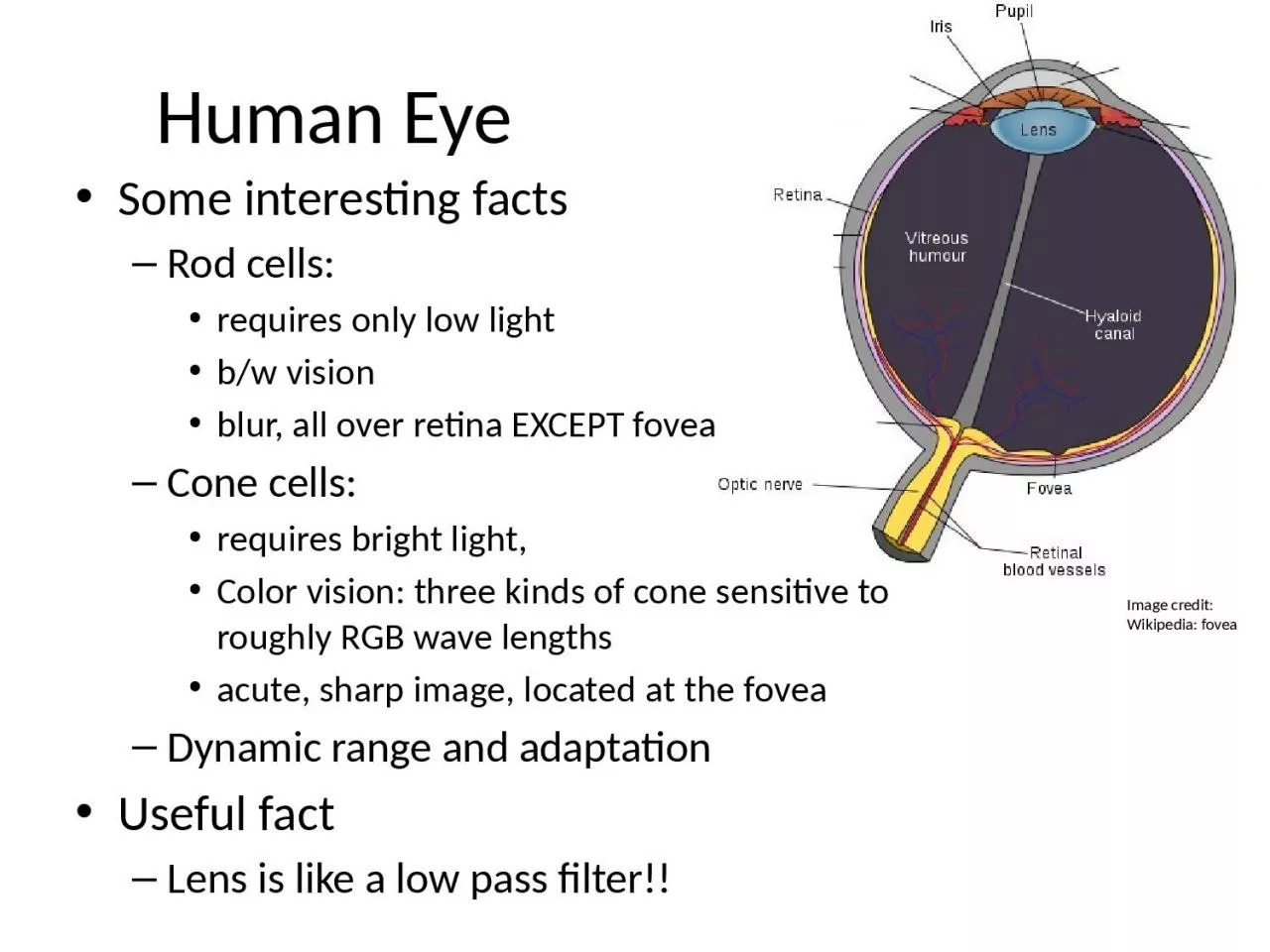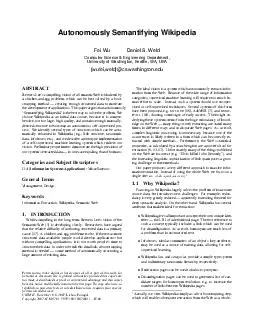PPT-Image credit: Wikipedia (Fovea)
Author : trinity | Published Date : 2024-03-15
Human Eye Some interesting facts Rod cells requires only low light bw vision blur all over retina EXCEPT fovea Cone cells requires bright light Color vision
Presentation Embed Code
Download Presentation
Download Presentation The PPT/PDF document "Image credit: Wikipedia (Fovea)" is the property of its rightful owner. Permission is granted to download and print the materials on this website for personal, non-commercial use only, and to display it on your personal computer provided you do not modify the materials and that you retain all copyright notices contained in the materials. By downloading content from our website, you accept the terms of this agreement.
Image credit: Wikipedia (Fovea): Transcript
Download Rules Of Document
"Image credit: Wikipedia (Fovea)"The content belongs to its owner. You may download and print it for personal use, without modification, and keep all copyright notices. By downloading, you agree to these terms.
Related Documents














